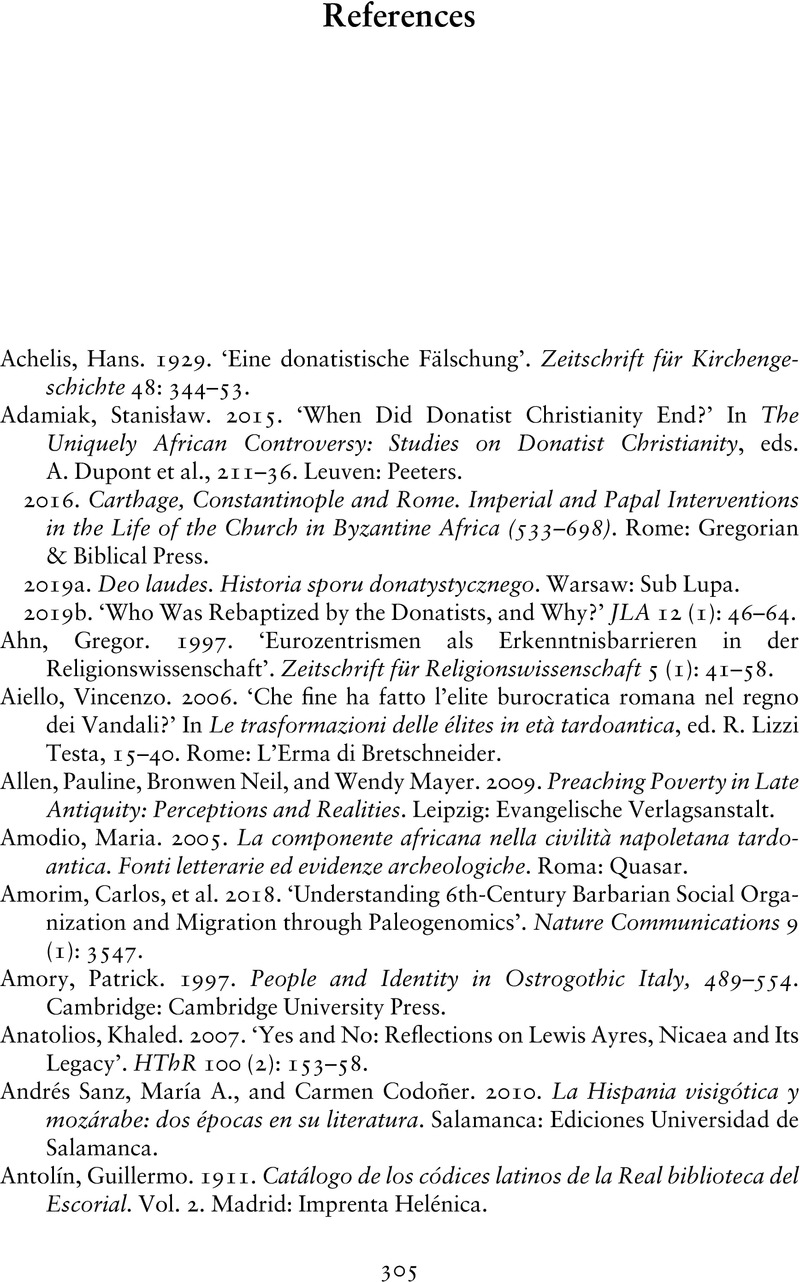Book contents
- Conversion and the Contest of Creeds in Early Medieval Christianity
- Conversion and the Contest of Creeds in Early Medieval Christianity
- Copyright page
- Dedication
- Contents
- Acknowledgements
- Abbreviations
- Introduction
- 1 Religious Controversy and Conversion in Vandal Africa
- 2 Building the Christian Kingdom
- 3 The Vandal Wars and Conversion in East Roman Africa
- 4 Nicene–Homoian Conversion in Ostrogothic Italy
- 5 Nicene–Homoian Conversions in Lombard Italy
- 6 The Religious Controversies in Gaul and Hispania before the Goths
- 7 Family Life and Conversion in Gaul, Hispania, and Italy
- 8 Converting the Kings
- 9 Converting the Kingdom
- Conclusion
- Sources
- References
- Index
- References
References
Published online by Cambridge University Press: aN Invalid Date NaN
- Conversion and the Contest of Creeds in Early Medieval Christianity
- Conversion and the Contest of Creeds in Early Medieval Christianity
- Copyright page
- Dedication
- Contents
- Acknowledgements
- Abbreviations
- Introduction
- 1 Religious Controversy and Conversion in Vandal Africa
- 2 Building the Christian Kingdom
- 3 The Vandal Wars and Conversion in East Roman Africa
- 4 Nicene–Homoian Conversion in Ostrogothic Italy
- 5 Nicene–Homoian Conversions in Lombard Italy
- 6 The Religious Controversies in Gaul and Hispania before the Goths
- 7 Family Life and Conversion in Gaul, Hispania, and Italy
- 8 Converting the Kings
- 9 Converting the Kingdom
- Conclusion
- Sources
- References
- Index
- References
Summary

- Type
- Chapter
- Information
- Publisher: Cambridge University PressPrint publication year: 2024



